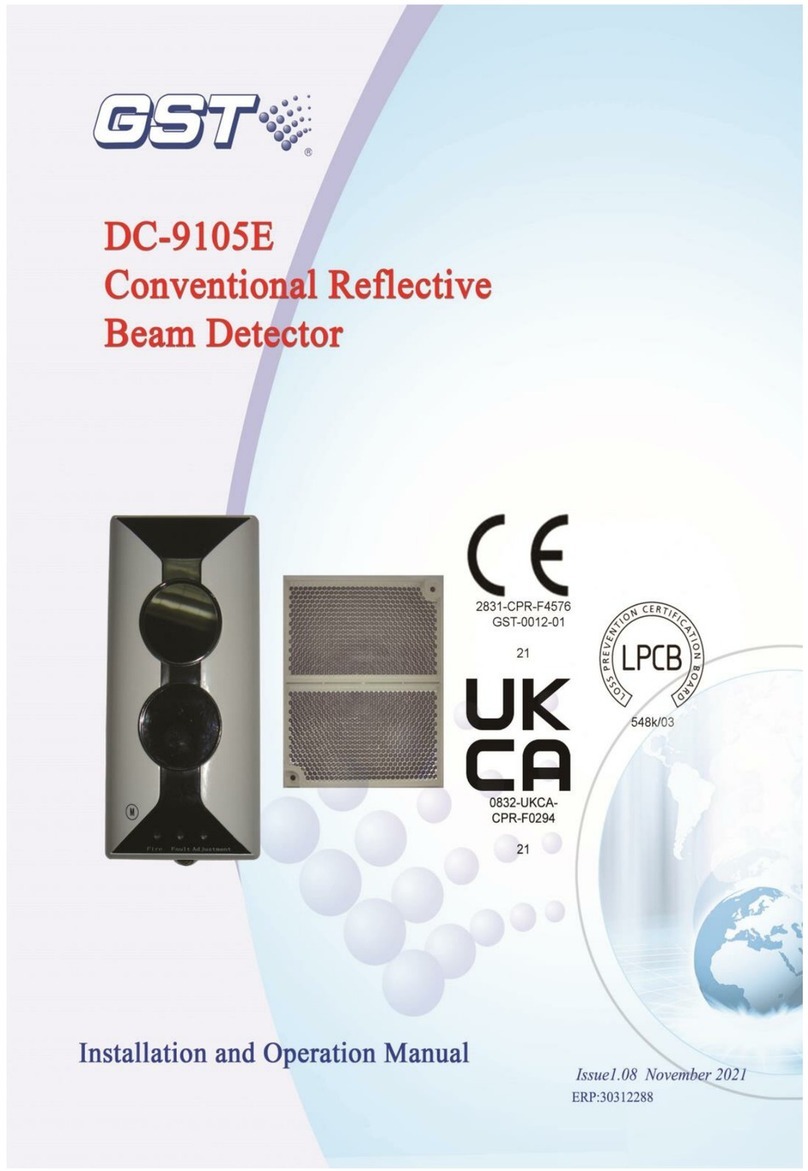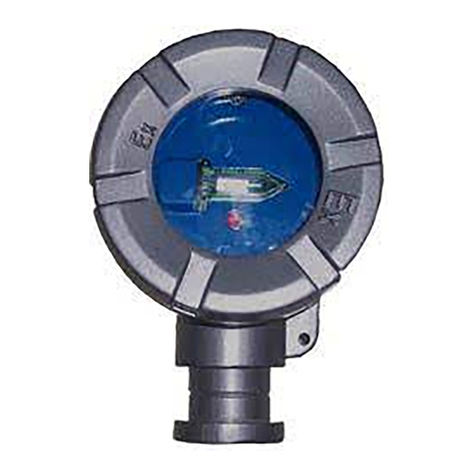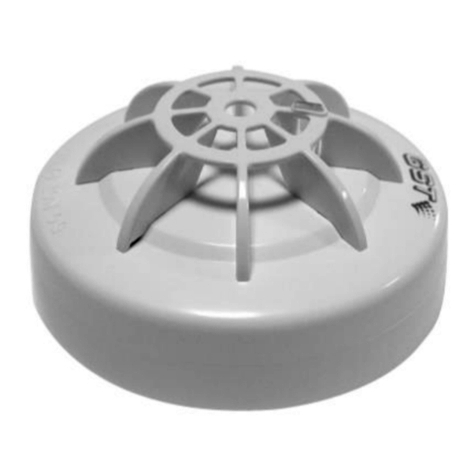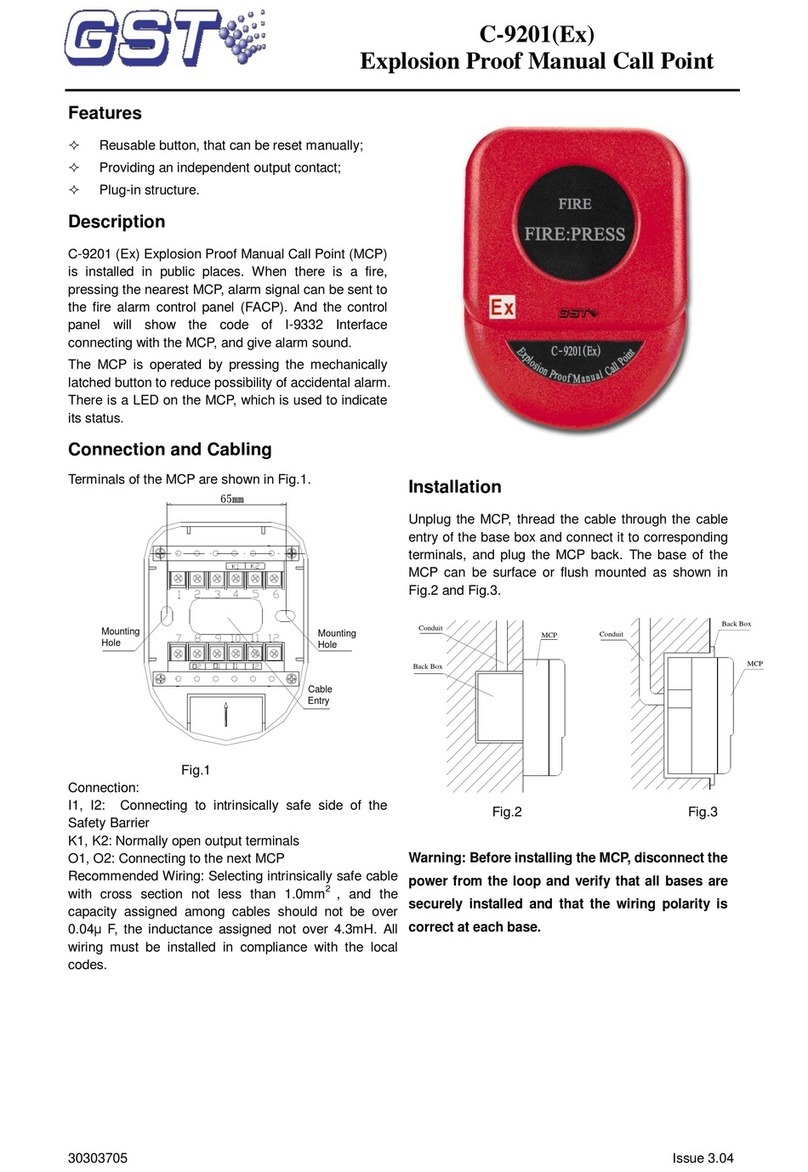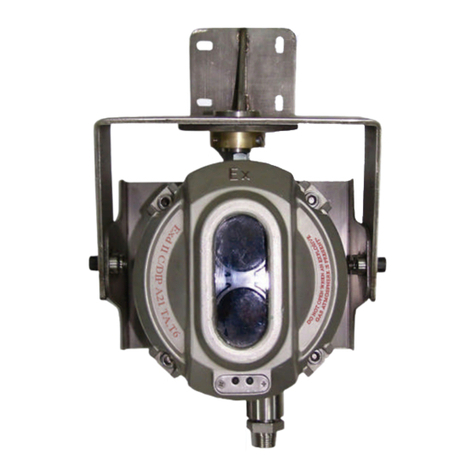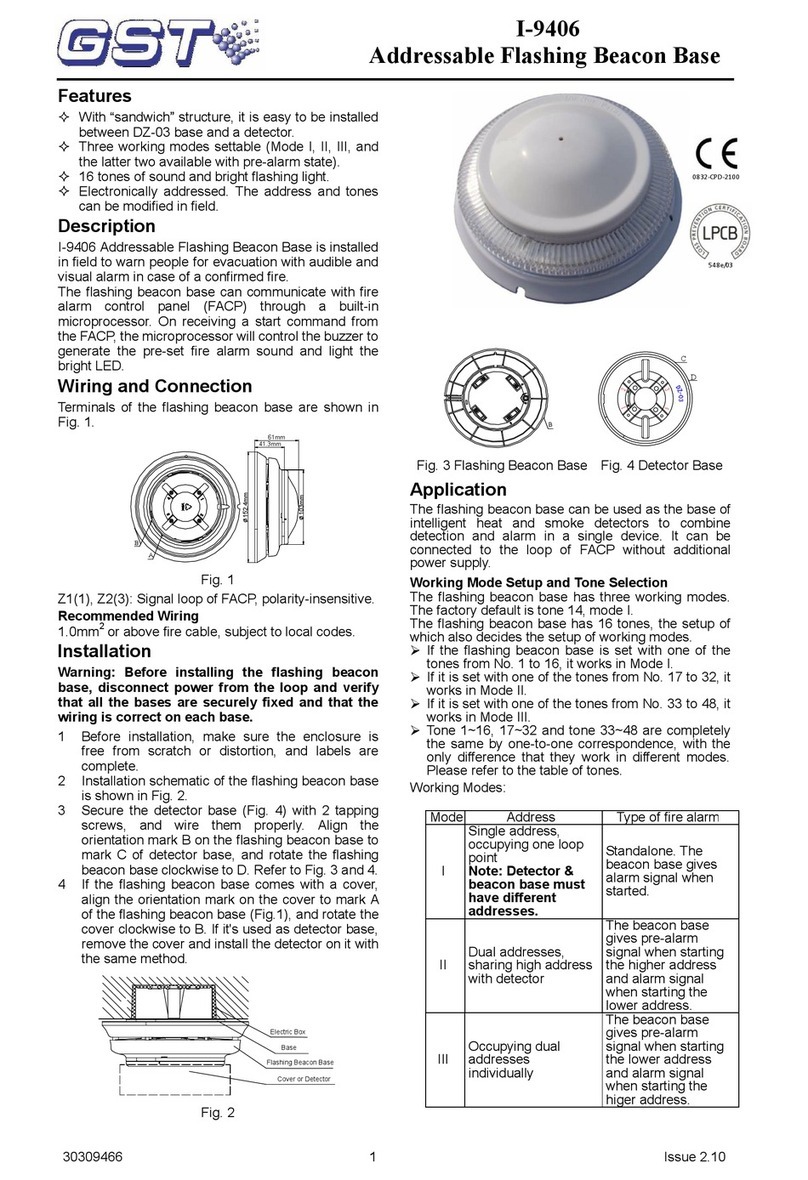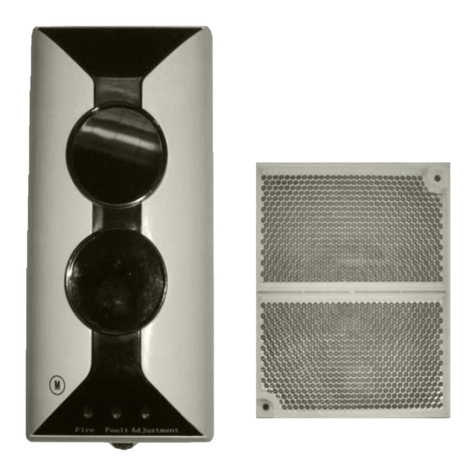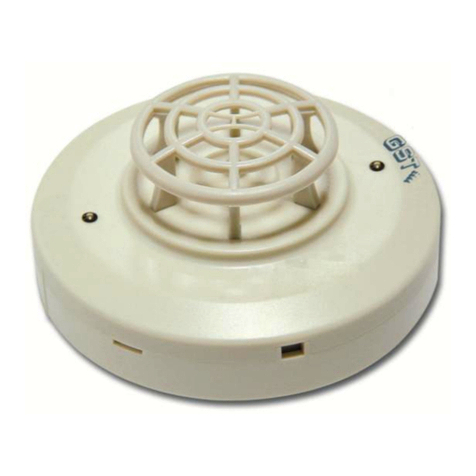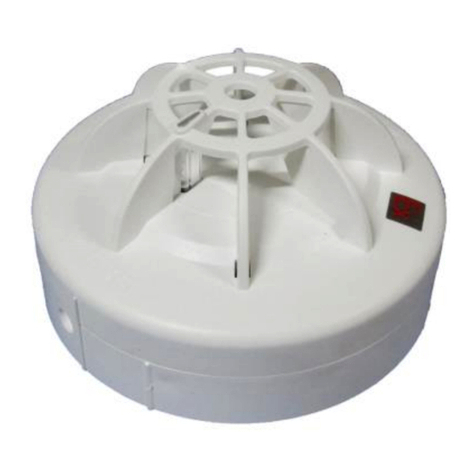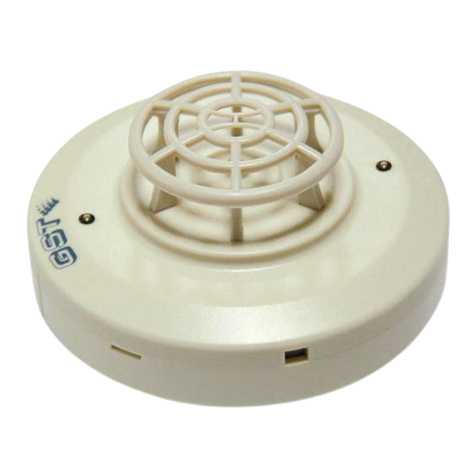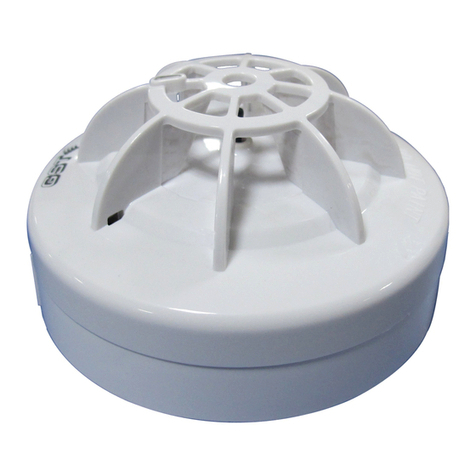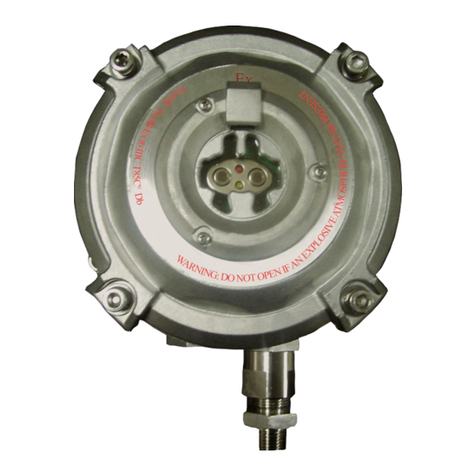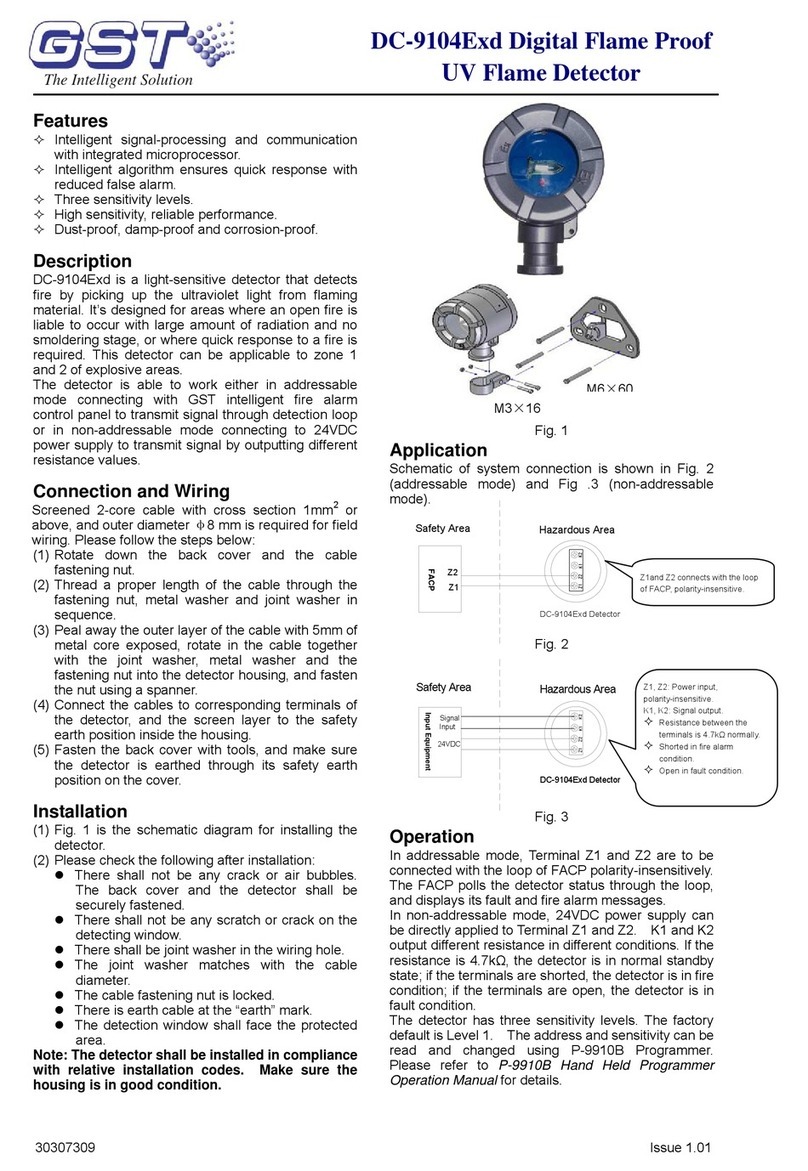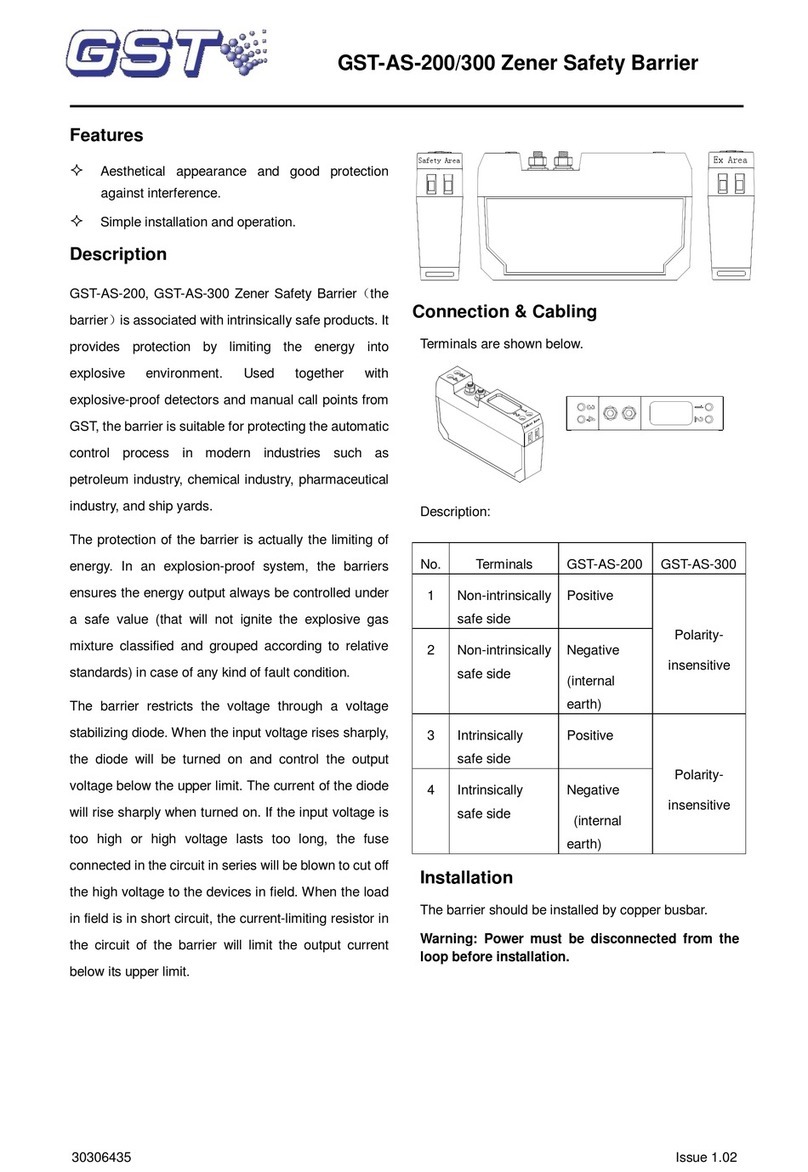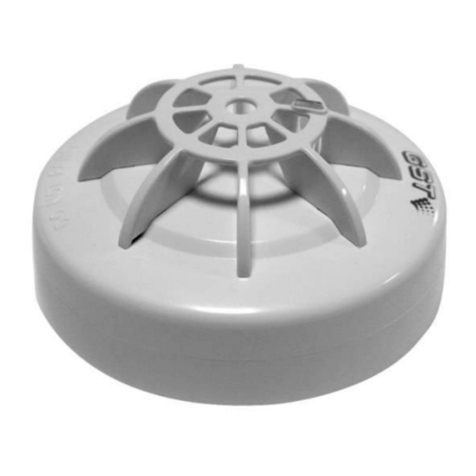
30309578 Issue 1.06
Testing
Note: Before testing, make sure the detector is properly
installed and powered up. Testing can only begin after the
detector is powered up for 10 seconds.
Before testing, notify the proper authorities that the system is
undergoing maintenance and will temporarily be out of service.
Disable the zone or system undergoing maintenance to avoid
unwanted alarms
The detector must be tested after installation and regular
maintenance. The methods should meet the requirements from local
authority. The detector should meet NFPA72. The testing methods
are as follows:
(1)Reed switch testing
The testing area of the detector is shown in Fig. 4.
Approach the commission tool to the testing area of the detector and
hold for several seconds until the detector alarms.
Fig. 4
(2)Temperature test
Approach a heater (such as a hair drier of 1000w-1500w) to the
thermistor of the detector until it alarms. It is 12 inches between the
hair drier and the thermistor to avoid damaging on the plastic
enclosure of the detector
After testing, disconnect power to the detector for over 10 seconds
to reset it. Notify the proper authorities that the system is back to
normal operation.
If a detector fails in testing, return it for repair.
Maintenance
The detector should be installed just before commission and
kept well before installation, taken corresponding measures for
dust-proof, damp-proof and corrosion-proof.
The dust cover cannot be removed until the project has been
plunged into usage.
Do fire simulation test at least once every 6 months.
Before fire simulation test, notify the proper authorities that the
system is undergoing maintenance and will temporarily be out
of service. Disable the zone or system undergoing maintenance
to avoid unwanted alarms.
Protect the metal component on the PCB against damp and
improper distortion.
Cautions
1. Detector should be firmly installed and the wire be reliable.
2. LED on the detector should face the main entrance for
people to see it.
3. Be careful not to damage the detector in maintenance.
4. Heat detector is not suitable for detecting smoldering fire.
Specification
Accessories and Tools
Back Plate for
Remote Indicator
Limited Warranty
GST warrants that the product will be free from defects in design,
materials and workmanship during the warranty period. This warranty
shall not apply to any product that is found to have been improperly
installed or used in any way not in accordance with the instructions
supplied with the product. Anybody, including the agents, distributors
or employees, is not in the position to amend the contents of this
warranty. Please contact your local distributor for products not
covered by this warranty.
≤1.5mA (without remote indicator)
≤3.5mA (with remote indicator)
Red, Flashes in polling, and illuminates in
alarming
Action Temperature :135°F (57.2°C )
Response rate of rise:15°F /min (8.3°C
/min)
Polarity-sensitive output, Directly connects
to remote indicator (built in 10k resistor in
series. Maximum output current is 2.0mA);
The remote indicator is quiet in polling and
will flash in alarming.
Electronically programmed
One address within 1 - 242.
Rate of rise and fixed temperature (default),
and fixed temperature programmable
Non-polarized 2-core for loop.
Polarized 2-core for remote indicator.
32°F (0°C) - 100°F (37.8°C)
0 - 95%, non-condensing
14°F (-10°C) - 122°F (+50°C)
0 - 95%, non-condensing
Ingress Protection
Rating
Diameter: 100mm
Height: 53.3mm (with base)
This Data Sheet is subject to change without notice. Please contact GST for more information or questions.
Gulf Security Technology Co., Ltd.
No. 80, Changjiang East Road, QETDZ, Qinhuangdao, Hebei, P. R. China 066004
Tel: +86 (0) 335 8502434 Fax: +86 (0) 335 8502532






